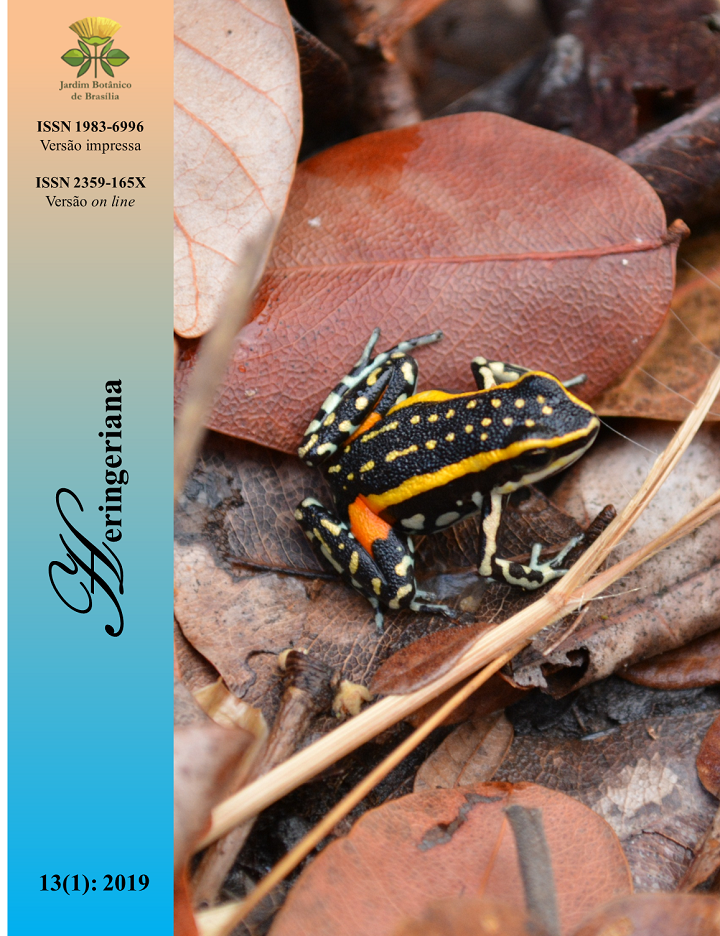Potential spots of occurrence of microendemic amphibian species from Atlantic Forest: the case of the genus Euparkerella Griffiths, 1959
DOI:
https://doi.org/10.17648/heringeriana.v13i1.917810Palavras-chave:
Anura, Endemic Amphibians, Potential Distribution Model, Rain ForestResumo
Forecasts indicate an increase in the number of endangered species and a high risk of extinction for the near future, mainly for endemic species on impacted regions, as the amphibians of the genus Euparkerella. Recently, populations of Euparkerella found in poorly sampled forest fragments have been presenting evidence that they might represent new species. In this scenario, the goal of this study was to identify forest remnants climatically appropriate to the occurrence of the group through models of potential distribution, pointing out unexplored regions to search for populations that might represent unknown species. The models were generated with the Maxent algorithm, and pointed out the south, center and north region of Rio de Janeiro state, and center and south of Espírito Santo state, regions that are affected by anthropogenic actions. The results indicate that the genus Euparkerella has its real distribution underestimated, and undescribed species might be already under threat.Downloads
Arquivos adicionais
Publicado
Como Citar
Edição
Seção
Licença
Ao fazer a submissão, os autores declaram não ter submetido o trabalho a outra revista e concordam em ter seu artigo publicado sob Licença Creative Commons Atribuição 4.0 Internacional BY (CC BY 4.0), que significa que os autores mantêm a propriedade dos direitos autorais, mas qualquer pessoa pode usar o conteúdo publicado, desde que os autores originais e a fonte sejam citados. O conteúdo científico, ortográfico e gramatical é de total responsabilidade dos autores.








